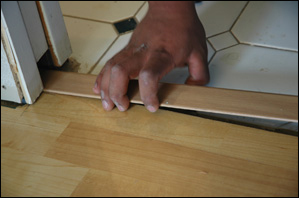Landlords are responsible for keeping their rental homes and other properties in good shape. As the building ages, landlords can expect to see certain signs of deterioration. This inevitable decline, known as normal wear and tear, is a problem they should fix to maintain the good condition of their property.
Intentional damage done by a person to a property, however, is a different story. This type of damage happens as a result of abuse, negligence, accident, or deliberate appearance change without the consent or approval of the property owner. In this case, the tenant is liable for the cost of the repair.
Unfortunately, some tenants and landlords don’t fully understand the difference between the two conditions. Tenants would assert that the damage is normal wear and tear, and property owners or landlords would say the tenants committed the damage.

The good news is that guidelines exist to clarify some of the confusion. Here’s a way to help you differentiate the two terms:
What Counts as Normal Wear and Tear
As a general rule, acceptable wear and tear is a form of deterioration that happens under normal use and normal conditions. Some concrete examples of reasonable wear and tear are the following:
- The wallpaper appears faded or torn
- Bathroom tiles have become loose with age
- The paint on the walls or ceiling is cracking, peeling, or fading
- Hardwood floors look old and require a fresh coat of paint and varnish
- The door becomes stuck due to humidity
What Counts as Property Damage
Anything beyond the acceptable wear and tear is unexpected damage. Your tenant or renter will be financially liable for the following types of negligent, accidental, or deliberate damage:
- An unauthorized paint job or design overhaul on any part of the property
- Burns, scratches, or stains are on kitchen counters, carpets, walls, and flooring
- Door hinges or knobs are missing or ripped off from their original positions
- Missing or torn curtains, drapes, and other types of window treatment
- Defective or inoperable appliances as a result of abuse or misuse
How Damage Can Affect the Property Value
Property damage, whether caused by an abusive or negligent tenant or everyday wear and tear, is a problem for landlords. Potential tenants may be discouraged to rent a property if they come across any unsightly damage.
If you have plans to sell your property, you need to make the necessary repairs before listing your rental building for sale. By skipping repairs, you’re shaving off a large amount of your asking price. You’re letting the future homeowner shoulder the cost of fixing the damaged parts of the property. Chances are they will refuse to foot the bill and walk away from the deal.
The value of a property also decreases faster if you allow it to age due to lack of maintenance. Though the age of a property can boost its value – in the case of old or historic properties – wear and tear can be a disadvantage. If you want to retain your property’s value, you need to spend money on upgrades.

Let Us Restore Your Interior
With Main Street Kitchen & Flooring, you may overhaul the appearance of your property interior to fix the damage or everyday wear and tear. Our company provides quality hardwood flooring in Orange County to enhance the look and improve the value of your property. We also remodel bathrooms and install kitchen cabinetry to breathe new life into your rooms and deliver a lasting impression of elegance.
Call (714) 582-5156 to schedule a free consultation.
